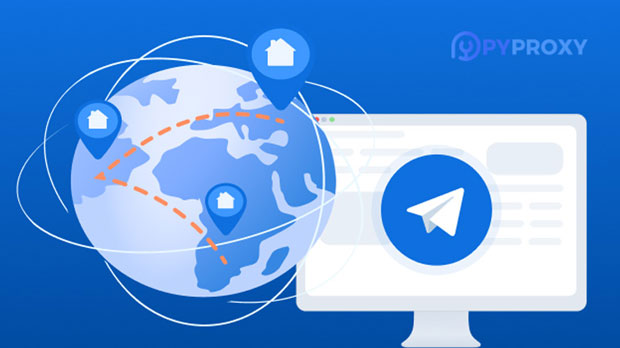In recent years, socks5 proxies have gained popularity for their ability to bypass geographical restrictions, improve privacy, and enhance internet security. However, their impact on accessing streaming services and video content can be quite significant, affecting both performance and user experience. SOCKS5 proxies work by routing internet traffic through a third-party server, masking the user's IP address, and enabling them to access content that might otherwise be unavailable due to regional limitations. While this sounds beneficial, there are several factors to consider when using SOCKS5 proxies for streaming, including speed, compatibility, and security risks. This article will explore how SOCKS5 proxies influence video content access, identify the advantages and drawbacks, and provide insights on how to optimize their use for streaming purposes. Understanding socks5 proxy TechnologyBefore diving into the effects on streaming, it's important to understand what SOCKS5 proxies are and how they work. SOCKS5, the latest version of the SOCKS protocol, is a type of internet proxy that routes traffic between the client and the server via an intermediary. Unlike traditional HTTP or HTTPS proxies, SOCKS5 proxies are not limited to a specific type of traffic, meaning they can handle all kinds of data, including web browsing, P2P, email, and streaming. SOCKS5 supports both TCP and UDP protocols, which gives it a broader range of uses, including real-time applications such as video streaming.What distinguishes SOCKS5 from other proxies is its ability to handle requests without modifying the data, thus making it more transparent and less likely to interfere with the data being sent. Additionally, SOCKS5 provides authentication options, which adds an extra layer of security, and can be configured to work with encryption methods to protect user privacy.Impact of SOCKS5 Proxy on Streaming Speed and LatencyOne of the most significant aspects to consider when using SOCKS5 proxies for video streaming is the effect on speed and latency. Streaming video content requires a stable and fast internet connection to ensure high-quality playback. SOCKS5 proxies, depending on the server location and the quality of the network infrastructure, can introduce varying levels of latency.When streaming content through a SOCKS5 proxy, the data has to travel through an additional intermediary server before reaching the destination. This process increases the time it takes for the data to travel between the client and the streaming server, resulting in higher latency. If the SOCKS5 server is far from the client’s location, this latency can be significant, leading to buffering, delayed video loading, and interruptions during playback.Furthermore, SOCKS5 proxies, while offering anonymity, can sometimes reduce download speeds due to server congestion or inadequate bandwidth allocation. This can be particularly problematic when streaming high-definition (HD) or ultra-high-definition (4K) video content, where higher bandwidth is required for smooth streaming. The user may experience lower resolution, buffering, or interruptions, which negatively impacts the overall viewing experience.Geographical Restrictions and Bypassing Content BlocksOne of the most notable benefits of using SOCKS5 proxies for streaming video is the ability to bypass geographical restrictions. Many streaming platforms impose location-based content restrictions, making certain movies, TV shows, or sports events unavailable in specific regions. By routing traffic through a socks5 proxy server located in a different country, users can access content that would otherwise be inaccessible due to regional blocking.For example, users in countries with limited access to popular streaming platforms can use a SOCKS5 proxy located in a region with fewer restrictions to access the content. Similarly, services like Netflix, Hulu, BBC iPlayer, and others offer different libraries of content based on the user’s geographical location. By changing the apparent IP address of the user, SOCKS5 proxies can unlock content from other regions, allowing access to a broader range of media.However, this practice can also have drawbacks. Streaming platforms have become increasingly sophisticated in detecting proxy usage. Many services now employ advanced algorithms to detect when a user is accessing content via a proxy or VPN, and they may block or throttle access to users identified as using these services. This may result in the inability to access certain content or decreased streaming quality as a result of the platform’s anti-proxy measures.Privacy and Security Considerations When Streaming with SOCKS5 ProxiesWhile SOCKS5 proxies provide a certain level of anonymity, there are privacy and security concerns that users should be aware of when using them for streaming video content. Unlike VPNs, SOCKS5 proxies do not encrypt traffic by default. This means that while the user's IP address is masked, the data being transmitted remains vulnerable to interception. This lack of encryption can be risky, especially when streaming from public or unsecured networks, as sensitive information may be exposed to cybercriminals or hackers.Additionally, SOCKS5 proxies do not provide the same level of security as a VPN. For example, if a user is streaming video through a SOCKS5 proxy on an unsecured network, their traffic may be vulnerable to man-in-the-middle (MITM) attacks. In this type of attack, an intermediary can intercept and potentially modify the data being transmitted between the user and the streaming server. To mitigate such risks, users should ensure they are using additional encryption tools or consider combining the SOCKS5 proxy with a secure VPN for enhanced privacy.Furthermore, users should be cautious about the trustworthiness of the SOCKS5 proxy server they are using. Since SOCKS5 proxies are typically provided by third-party services, there is a potential for these services to log user activity or misuse personal data. It is essential to choose a reputable service provider that has a strict no-logging policy to protect user privacy.Compatibility with Streaming PlatformsNot all streaming platforms are compatible with SOCKS5 proxies. Some services might block known proxy IP addresses or implement anti-proxy measures that prevent users from accessing content through such proxies. For example, Netflix has been known to detect and block users attempting to access its content through SOCKS5 proxies or VPN services.Moreover, certain streaming applications may have built-in features that can detect and disable access through proxies. For instance, live sports streaming services may have sophisticated systems in place to prevent proxy traffic in order to combat piracy. This can cause compatibility issues, making it difficult or impossible to stream content through a SOCKS5 proxy.To maximize the effectiveness of a SOCKS5 proxy for streaming, users may need to test different proxy servers or adjust proxy settings. Some proxies may work better with specific streaming platforms, while others may require additional configuration to bypass geographic restrictions successfully.Optimizing the Use of SOCKS5 Proxies for StreamingFor users looking to optimize their SOCKS5 proxy setup for streaming, several best practices can improve the experience. First, choosing a proxy server that is geographically close to the streaming service’s server can reduce latency and improve streaming speeds. Additionally, using a high-quality SOCKS5 proxy provider with fast and reliable servers will minimize buffering and interruptions.Second, it is advisable to combine SOCKS5 proxies with other tools, such as browser extensions or streaming apps that help bypass content restrictions more effectively. Some users also prefer using SOCKS5 proxies in conjunction with a VPN for an extra layer of security and privacy.Finally, users should periodically check for updates from streaming platforms regarding proxy detection measures. As streaming services continue to evolve, they may change their methods for detecting and blocking proxies, which could impact the effectiveness of SOCKS5 proxies in the future.ConclusionSOCKS5 proxies offer several advantages for users seeking to bypass geographical restrictions and maintain privacy while streaming video content. However, the impact on streaming performance, compatibility, and security is multifaceted. By understanding the potential challenges and optimizing the setup, users can maximize the benefits of SOCKS5 proxies while minimizing drawbacks. The key is to choose reliable, high-speed servers, understand the limitations imposed by streaming platforms, and ensure that privacy and security concerns are addressed. When used correctly, SOCKS5 proxies can be a valuable tool for enhancing access to global video content.
Dec 24, 2024
![arrow]()

















































